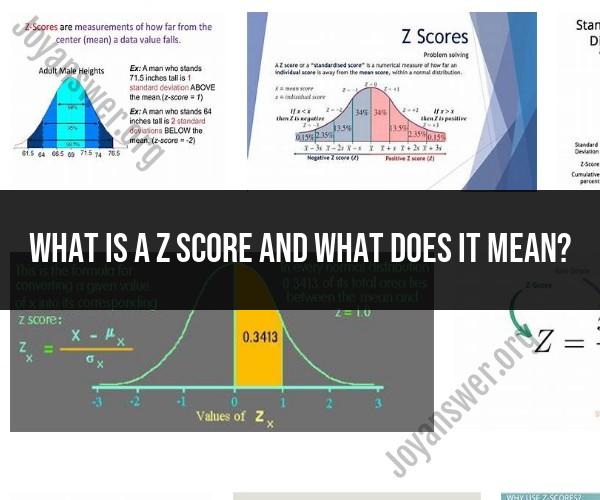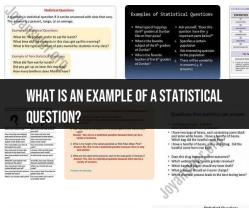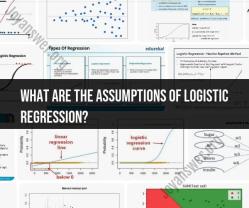What is a z score and what does it mean?
A z-score, also known as a standard score, is a statistical measure that quantifies how far a particular data point is from the mean (average) of a dataset in terms of standard deviations. Z-scores are used to standardize data and make it easier to compare values from different datasets or understand the relative position of a data point within a distribution. Here's what a z-score is and what it means:
Formula for Z-Score:The formula for calculating a z-score for a specific data point in a dataset with mean and standard deviation is:
- is the z-score.
- is the individual data point.
- (mu) is the mean of the dataset.
- (sigma) is the standard deviation of the dataset.
Significance and Interpretation:
- Magnitude: The magnitude of the z-score indicates how many standard deviations a data point is from the mean. A larger magnitude suggests a greater deviation from the mean.
- Positive or Negative: The sign of the z-score (positive or negative) indicates whether the data point is above or below the mean:
- A positive z-score means the data point is above the mean.
- A negative z-score means the data point is below the mean.
- Meaning: A z-score tells you how "unusual" or "typical" a data point is within a dataset. It provides context about how far the data point is from the center (mean) and how spread out the data is (standard deviation).
Use Cases:
- Comparison: Z-scores are used to compare data points from different datasets. By standardizing the values, you can assess how each data point relates to its respective dataset.
- Outlier Detection: Z-scores can help identify outliers in a dataset. Data points with z-scores significantly higher or lower than zero may be considered outliers.
- Statistical Testing: Z-scores are often used in hypothesis testing and statistical analysis to determine if a data point is significantly different from the mean.
Example:Let's say you have a dataset of test scores in a class with a mean () of 75 and a standard deviation () of 10. If a student scored 85 on the test, you can calculate the z-score as follows:
This z-score of 1 indicates that the student's score is 1 standard deviation above the mean. In this context, it means the student performed relatively well compared to the class's average.
In summary, a z-score provides a standardized way to assess the relative position of a data point within a dataset, helping you understand how "typical" or "unusual" that data point is in the context of the dataset's distribution.












